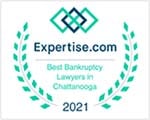When Chapter 7 Is The Right Option
Ohio consumers who feel they are drowning in debt should learn if a Chapter 7 bankruptcy may be right for them.
The thought of filing for bankruptcy may not be every Ohioan’s dream but neither is drowning under an unmanageable pile of debt and bills. Consumers deserve the right to get a fresh start and a bankruptcy can often provide just that. However, it can be difficult to know which type of bankruptcy is best for a given situation. Understanding this will be important for anyone considering bankruptcy as a debt-relief solution.
How does Chapter 7 work?
360 Degrees of Financial Literacy explains that a Chapter 7 bankruptcy is often called a liquidation bankruptcy. This is because some of a person’s assets may be sold by the plan trustee in order to pay creditors. The assets at risk of loss may include homes or vehicles with values greater than the designated exemption levels.
If a person does not have many secured assets or belongings of great value, Chapter 7 could be a viable option. The U.S. Courts indicates that other assets may be seized and sold during a Chapter 7. Unsecured debts, like credit card bills or medical bills, have no associated collateral. Therefore, they may be eliminated in a Chapter 7 bankruptcy. With this type of plan, there is no repayment of debt needed for any unsecured debts.
How does Chapter 7 differ from Chapter 13?
With a Chapter 13 plan, debts are eventually discharged but only after being repaid, at least in part. Debtors agree to make monthly payments to a trustee over a set period of time, after which a discharge is achieved.
Chapter 13 filings may also help to stop foreclosure activity, giving homeowners the time needed to get current on payments and keep their homes. People who own homes often choose Chapter 13 plans largely for this reason.
Can a Chapter 7 eliminate all types of debt?
According to Nerd Wallet, Chapter 7 bankruptcies can be very helpful to debt-laden consumers but they are not magic bullets. There are some types of debts that are not allowed to be included in a bankruptcy. These include things like child support, student loans and even some tax debt.
What should Ohio consumers do when debt becomes too much?
Researching options for debt relief is important. A good way to get the best and most current information is to talk to a bankruptcy attorney. Some aspects of bankruptcy law will be governed by Ohio law and other by federal law so working with a professional is the best way to be sure and get the right details.

